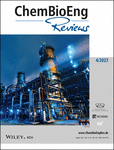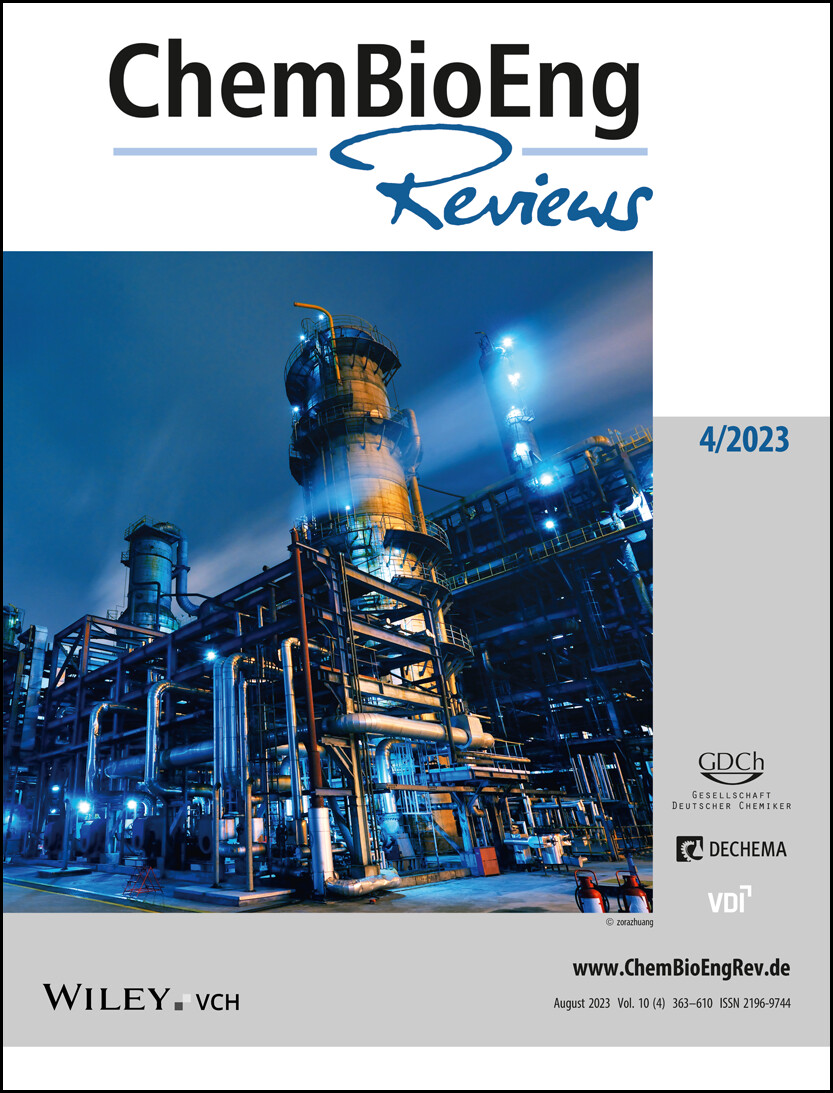Journal list menu
Export Citations
Download PDFs
Cover Picture
Masthead
Contents
Table of Contents: ChemBioEng Reviews 4/2023
- Pages: 365-369
- First Published: 07 August 2023
Reviews
Catalytic Biomass Gasification in Supercritical Water and Product Gas Upgrading
- Pages: 370-398
- First Published: 05 July 2023
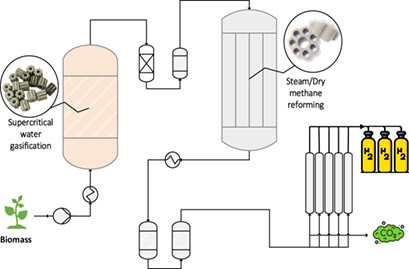
Biomass gasification with supercritical water is a sustainable method of hydrogen production. Recent research on this topic is reviewed, demonstrating that this process produces not only hydrogen gas but also a mixture of hydrocarbons, which bind a part of it in the H–C bonds. An innovative process for upgrading the gaseous product while focusing on the most suitable catalysts is proposed.
A Meta-Analysis of Catalytic Hydrogenation of Levulinic Acid to γ-Valerolactone
- Pages: 399-411
- First Published: 16 June 2023
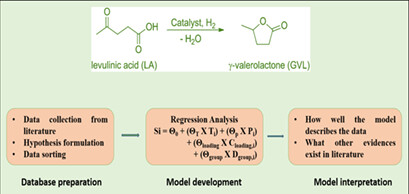
The selective hydrogenation of biomass-derived levulinic acid (LA) to γ-valerolactone (GVL) is an important reaction in biomass upgradation for the production of valuable fuels and chemicals. Here a meta-analysis approach for identifying associations between the physico-chemical properties of a catalyst and its reaction performance is propossed.
Assessment of Homogeneous and Heterogeneous Catalysts in Transesterification Reaction: A Mini Review
- Pages: 412-422
- First Published: 26 June 2023
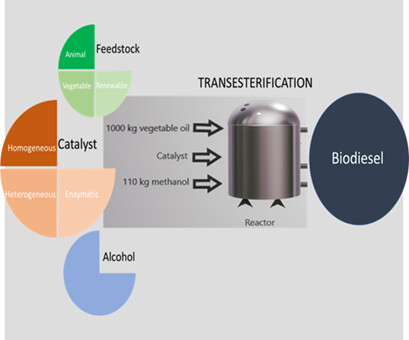
A catalyst is particularly important in biodiesel production, which typically involves the transesterification of vegetable oils or animal fats with alcohol. By introducing a catalyst, even enzymatic, homogeneous, or heterogeneous, the reaction rate is significantly increased. This is important for large-scale biodiesel production, where high throughput and efficiency are desired.
Control Strategies for Enhanced Biogas Production from Chicken Manure
- Pages: 423-440
- First Published: 06 June 2023
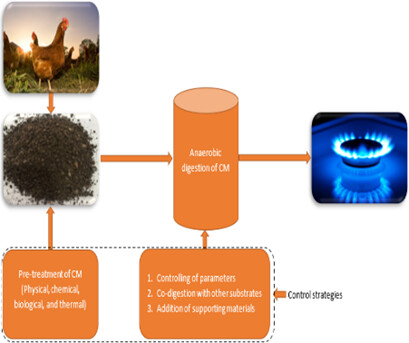
Control strategies adopted in formulation and anaerobic digestion of chicken manure (CM) to promote biogas production are reviewed and discussed. Pretreatment using physical, chemical, biological, and thermal techniques successfully improves hydrolysis of CM as well as biogas and methane production. The proposed control strategies enable efficient use of CM resulting in higher biogas production.
Recent Development in Urban Polyhydroxyalkanoates Biorefineries
- Pages: 441-461
- First Published: 20 July 2023
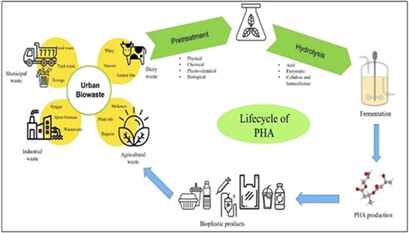
Overuse and improper disposal of plastics have become a major global concern.. Biodegradable polyhydroxyalkanoates (PHAs) are the best replacement for plastic since microorganisms produce these spontaneously from urban garbage using cheap carbon sources. The current state of bioplastics and the potential of urban waste from different industries as cost-effective feedstocks for PHA synthesis are reviewed.
Polycyclic Aromatic Hydrocarbons Occurrences in Biomass Char and Its Mitigation Approaches: A Mini Review
- Pages: 462-479
- First Published: 07 July 2023
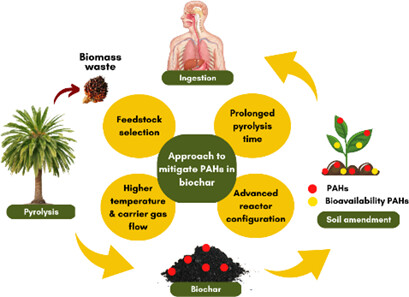
Polycyclic aromatic hydrocarbon (PAHs), an organic contaminant forms simultaneously during the pyrolysis process of biochar. The high level of PAHs affects the quality of biochar as a soil additive. The approach to minimize the PAHs content was proposed by controlling pyrolysis conditions and selecting feedstock used for safe biochar application.
Advances in Halloysite Nanotubes (HNTs)-Based Mixed-Matrix Membranes for CO2 Capture
- Pages: 480-490
- First Published: 12 April 2023
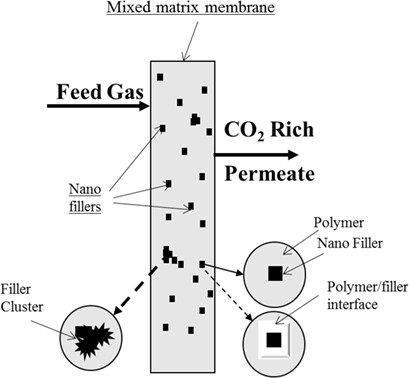
The incorporation of halloysite nanotubes (HNTs) in mixed-matrix membranes presents an opportunity for more efficient carbon dioxide capture. The current status for potential applications of HNTs-based membranes for gas separation is reviewed. Further research is needed to bridge the knowledge gaps and optimize the future application of HNTs-based membranes for gas separation.
Sequestration of Contaminants from Wastewater: A Review of Adsorption Processes
- Pages: 491-509
- First Published: 26 June 2023
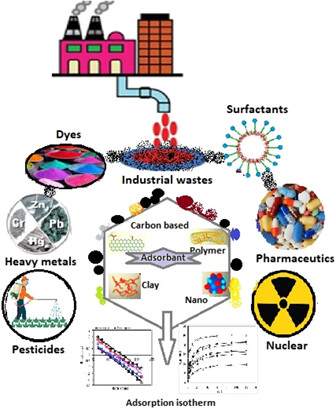
Water being the most vital constituent of life is being contaminated by disposal of pollutants and toxic substances into the water bodies. Elimination of these toxicants is complex but extremely indispensable. Numerous methods have been applied for this purpose amongst which adsorption is the most effective, fast, simple, and inexpensive technique. An overview of the various contaminants of concern, parameters affecting adsorption, types of adsorbents are discussed.
Manganese Oxide Nanoparticles: An Insight into Structure, Synthesis and Applications
- Pages: 510-528
- First Published: 03 April 2023
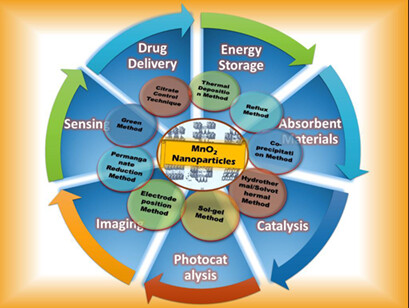
The recent trends in manganese oxide research as well as the structure of numerous crystalline phases of manganese oxide nanoparticles are summarized. In addition the temperature and different synthesis conditions dependent phase transformations and applications of manganese oxide nanoparticles in catalysis are discussed.
Ionic Liquid Based Treatment – A Potential Strategy to Modify Bacterial Cellulose
- Pages: 529-540
- First Published: 29 June 2023

Looking for technologies that can modify the bacterial cellulose (BC) in situ or ex situ is a challenge. Ionic liquid (IL) anions and cations have high mobility; they can penetrate deeper into aggregated BC chains, resulting in a more open mass fractal form. Moreover, IL assists in esterification, alkylation, oxidation, acetylation, and other chemical modifications which enhance the degradation of bacterial cellulose.
Challenges and Solutions in Solar Photovoltaic Technology Life Cycle
- Pages: 541-584
- First Published: 07 June 2023
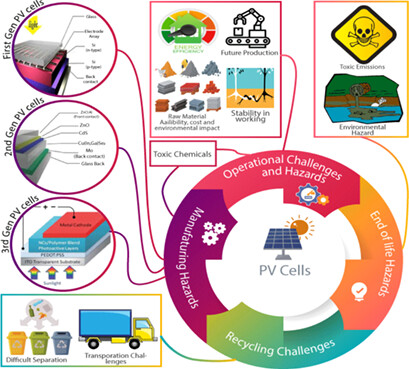
This review highlights the advantages and disadvantages of photovoltaic solar technologies, which can meet energy needs but also pose sustainability issues. It mentions a comprehensive review that covers various aspects of solar photovoltaic technologies, including potential risks, end-of-life management, and recycling. The review also examines technological advancement, financial aspects, and environmental threats and provides solutions for this rapidly developing technology.
Droplet Shape and Drag Coefficients in Non-Newtonian Fluids: A Review
- Pages: 585-596
- First Published: 16 February 2023
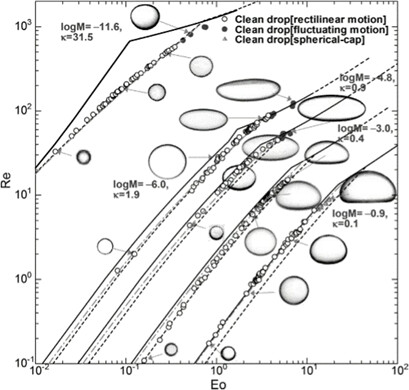
Droplet motion in an insoluble fluid is widely used in many industrial processes such as liquid-liquid extraction, oil drilling, impeller mixer, and biopharmaceuticals. The motion behavior of droplets includes shape, deformation, coalescence, breakage, velocity, etc. Here, the shape and velocity have essential effects on heat transfer, mass transfer, and reaction rate of the liquid-liquid two-phase system. Therefore, a profound understanding of droplet motion behavior is of great significance for optimizing industrial processes involving droplet motion.
Overview of Fouling – An Industrial Jeopardy
- Pages: 597-610
- First Published: 19 April 2023
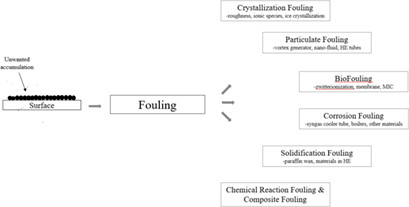
Fouling is a usual phenomenon observed in equipments used for household to industrial applications involving solid-liquid-gas contact. The excess deposits developed due to fouling cause an adverse impact on the environment. The various types of industrial fouling in general and specific fouling scenarios, their mechanisms, and the difficulties that arise thereby are overviewed and discussed.




